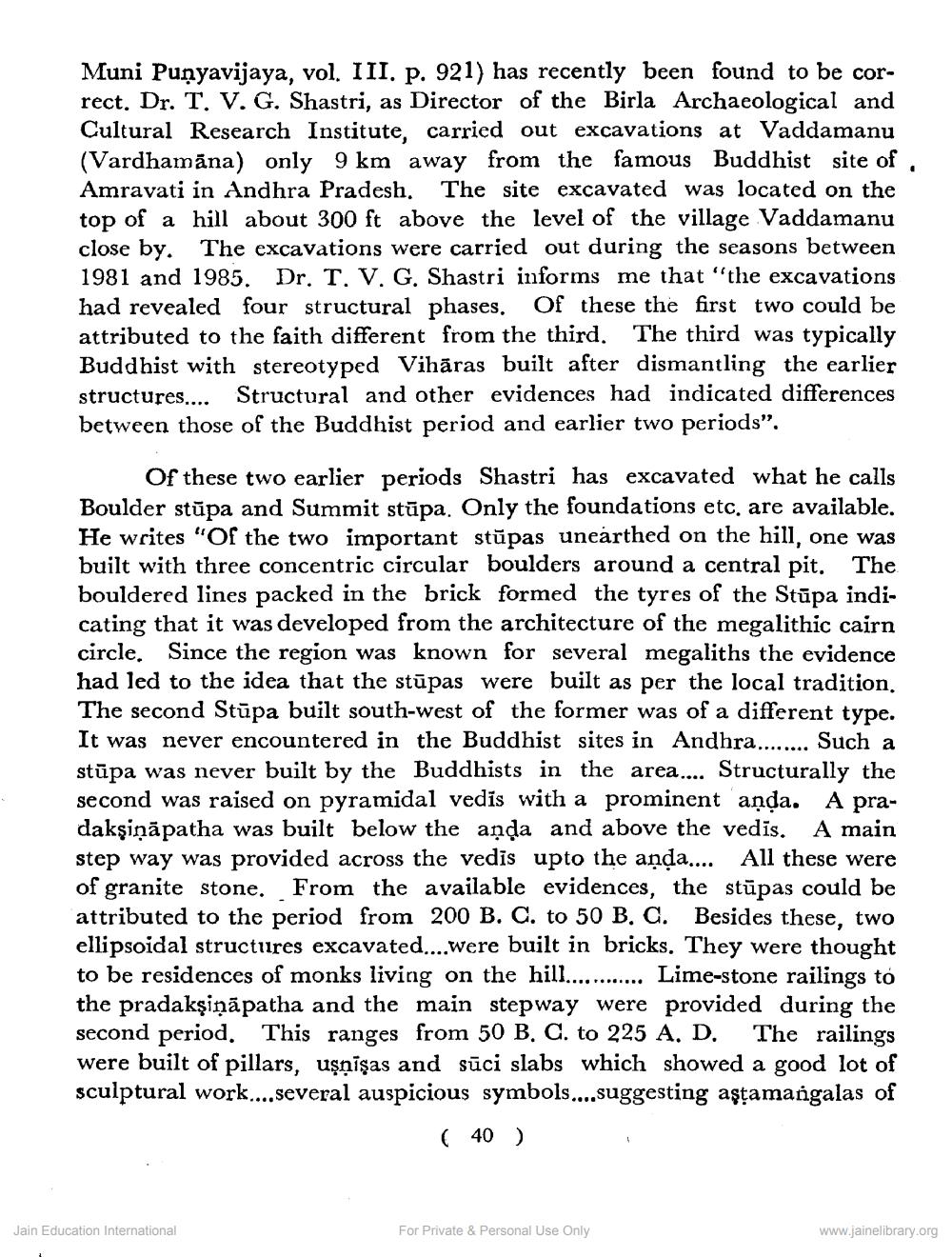________________
Muni Punyavijaya, vol. III. p. 921) has recently been found to be correct. Dr. T. V. G. Shastri, as Director of the Birla Archaeological and Cultural Research Institute, carried out excavations at Vaddamanu (Vardhamāna) only 9 km away from the famous Buddhist site of Amravati in Andhra Pradesh. The site excavated was located on the top of a hill about 300 ft above the level of the village Vaddamanu close by. The excavations were carried out during the seasons between 1981 and 1985. Dr. T. V. G. Shastri informs me that "the excavations had revealed four structural phases. Of these the first two could be attributed to the faith different from the third. The third was typically Buddhist with stereotyped Vihāras built after dismantling the earlier structures.... Structural and other evidences had indicated differences between those of the Buddhist period and earlier two periods".
Of these two earlier periods Shastri has excavated what he calls Boulder stūpa and Summit stūpa. Only the foundations etc. are available. He writes "Of the two important stūpas unearthed on the hill, one was built with three concentric circular boulders around a central pit. The bouldered lines packed in the brick formed the tyres of the Stūpa indicating that it was developed from the architecture of the megalithic cairn circle. Since the region was known for several megaliths the evidence had led to the idea that the stūpas were built as per the local tradition. The second Stūpa built south-west of the former was of a different type. It was never encountered in the Buddhist sites in Andhra...... Such a stūpa was never built by the Buddhists in the area.... Structurally the second was raised on pyramidal vedis with a prominent anda. A pradaksinā patha was built below the anda and above the vedīs. step way was provided across the vedis upto the anda.... All these were of granite stone. From the available evidences, the stūpas could be attributed to the period from 200 B. C. to 50 B. C. Besides these, two ellipsoidal structures excavated....were built in bricks. They were thought to be residences of monks living on the hill............. Lime-stone railings to the pradakşiņāpatha and the main stepway were provided during the second period. This ranges from 50 B. C. to 225 A. D. The railings were built of pillars, uşnīşas and sūci slabs which showed a good lot of sculptural work....several auspicious symbols....suggesting aştamangalas of
(40)
Jain Education International
For Private & Personal Use Only
www.jainelibrary.org




